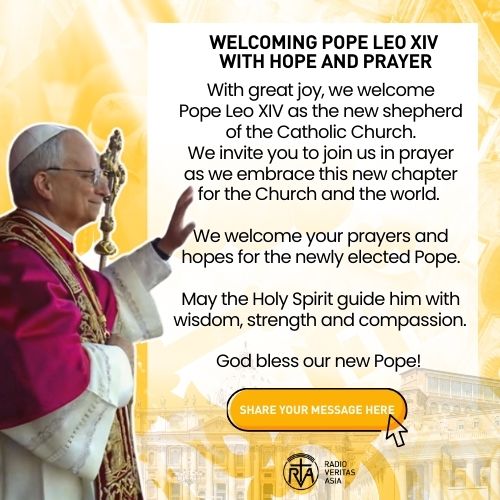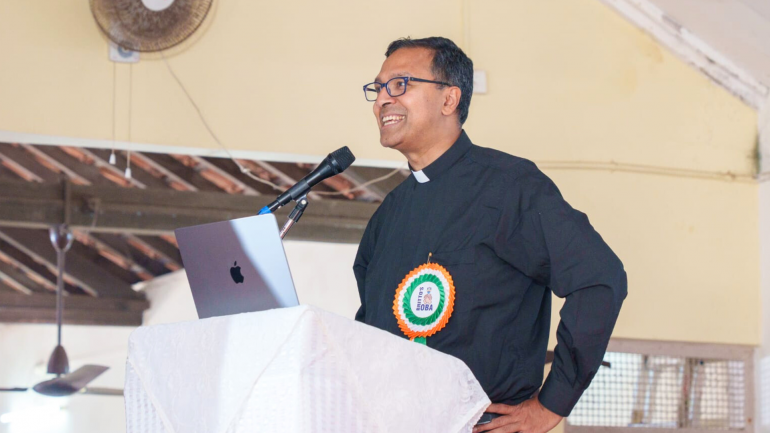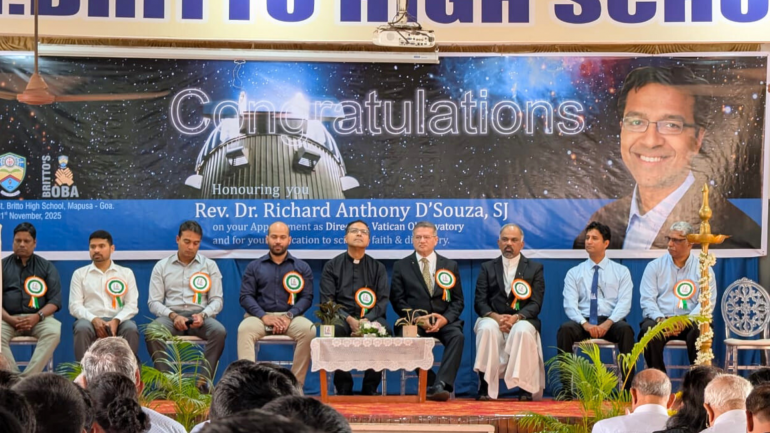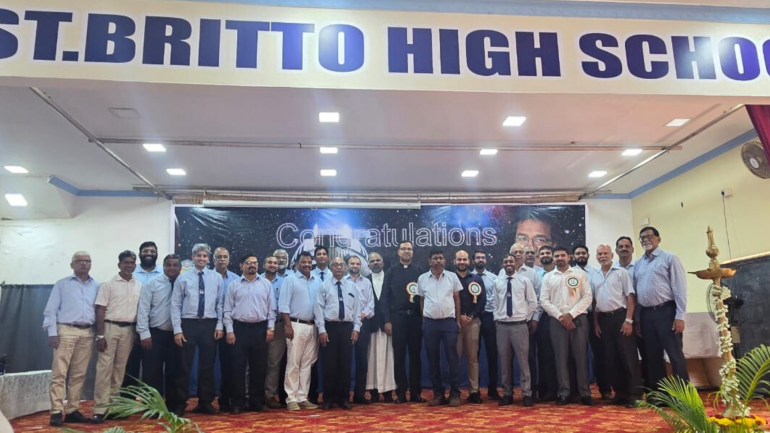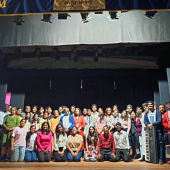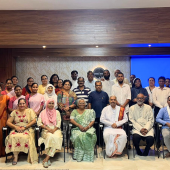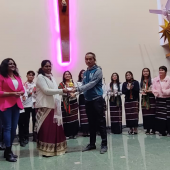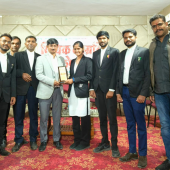India: Goa’s St. Britto’s School Honours Alumnus and Vatican Observatory Director Fr Richard D’Souza, SJ
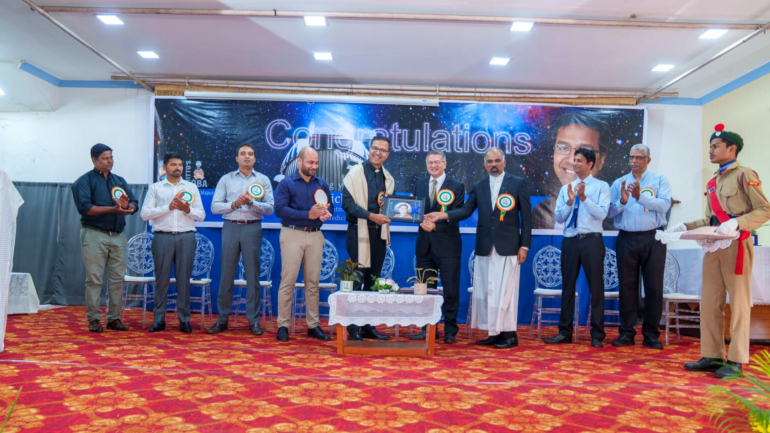
St. Britto’s High School and the Britto’s Old Boys’ Association (OBA), Mapusa, in the western Indian state of Goa, honoured distinguished astronomer and proud Brittonian Fr. Richard D’Souza, SJ, on November 21, on his appointment as Director of the Vatican Observatory.
Addressing students, faculty, dignitaries, and OBA members, Fr. D’Souza expressed deep gratitude with characteristic humility. “I feel a bit uncomfortable being felicitated in my own school,” he said. “I usually visit in a simple, familiar way. To receive so much honour on this stage feels overwhelming, but I am truly grateful.”
In an engaging presentation, the Jesuit scientist reflected on the power of wonder and how astronomy fuels humanity’s desire to explore creation.
A privileged moment in cosmic history
Fr D’Souza reminded students that only in the last century have humans begun to understand how galaxies, stars, and planets form—and what the universe’s future might hold. With vast streams of data now flowing from modern telescopes, he said today’s generation “literally carries the universe in their pockets,” thanks to technology.
He shared striking images of globular clusters, star-forming regions like the Orion Nebula, supernova remnants, and multi-wavelength views of the Andromeda Galaxy.
Telescopes as “buckets of light”
Explaining how astronomers capture cosmic images, he likened telescopes to rainwater buckets: you either wait longer or use a bigger bucket.
From school telescopes of 60 cm to the Vatican Observatory’s 2.5-metre instrument, and the world’s largest 10-metre mirrors, each opens new windows into the universe.
He highlighted the impact of space missions like Gaia and Euclid, and the groundbreaking capabilities of the newly completed Vera Rubin Observatory.
The Webb telescope: revealing a hidden universe
Fr D’Souza described the James Webb Space Telescope as a revolution in astronomy, able to see through cosmic dust and reveal new details about planets, stellar nurseries, and distant galaxies. “We now see the universe in a completely new way,” he said. Whether a schoolboy or a scientist looks at these images, “they whisper the same word: Wow.”
Science must keep growing
Encouraging students, he stressed that research is not memorisation but curiosity. Using “galactic archaeology” as an example, he showed how the faint outer stars of Andromeda reveal ancient cosmic collisions, “like dents and scratches that tell a story.”
He urged the young audience to nurture the universal human desire to reach beyond oneself, connecting astronomy to humanity’s longing for meaning and wonder.
Three invitations to young minds
-
Be curious – Ask questions; discovery begins with the right questions.
-
Learn to speak and write well – Even great discoveries must be communicated clearly.
-
Share what you learn – Teaching deepens understanding.
Celebrating excellence rooted in Mapusa
Headmaster Fr Basil Vago, SJ, welcomed the gathering and hailed Fr D’Souza’s appointment as “a celebration of excellence, discipline, and the enduring spirit of St Britto.”
“Your roots may be here in Mapusa,” he told students, “but your aspirations can span galaxies.”
The programme opened with a welcome song and the lighting of the ceremonial lamp. Members of the State Legislative Assembly, Michael Lobo (Calangute), Joshua D’Souza (Mapusa), and Adv Carlos Ferreira (Aldona), together with OBA President Rohan Nazareth, extended their felicitations.
The event was attended by Fr. Pedro Rodrigues, SJ, Provincial Superior of the Goa Jesuits; Fr. José Silveira, SJ, Superior of the St Britto Community; Panaji Mayor Rohit Monserrate, and Commissioner Clen Medeira, along with priests, religious, alumni, and students.
Ian Pinto compered the programme, and Gerard D’Souza delivered the vote of thanks.
Radio Veritas Asia (RVA), a media platform of the Catholic Church, aims to share Christ. RVA started in 1969 as a continental Catholic radio station to serve Asian countries in their respective local language, thus earning the tag “the Voice of Asian Christianity.” Responding to the emerging context, RVA embraced media platforms to connect with the global Asian audience via its 21 language websites and various social media platforms.


